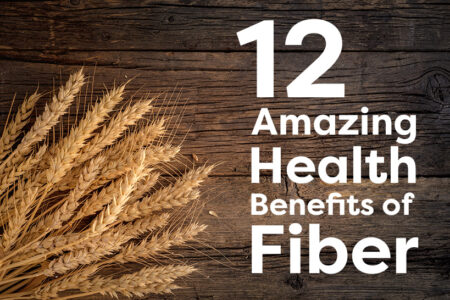Should you weight lift or walk every day? Should you join a swimming class or hire a personal trainer to help you with resistance training? Are you finding it overwhelming to make up your mind between the anaerobic vs aerobic exercise battle?
We’ll walk you through each one of them in detail, and show you what research has to say about it so you can make a better-informed decision.
What Is Anaerobic Exercise?
Anaerobic means without oxygen, and it refers to high-intensity exercises such as weight lifting and sprinting. Anaerobic exercise uses carbs (sugar) as the primary fuel. If you find it harder to breathe through your nose, feel like you’re constantly running out of breath, and can’t hold a conversation, it means you’re in an anaerobic state (or exercise).
If you’re in the anaerobic state, your heart rate will usually be 130 or above. Anaerobic exercise is usually practiced to build lean muscle mass and to build body strength.
What Is Aerobic Exercise?
Aerobic means with oxygen, and it usually describes low-intensity exercises such as swimming, jogging, walking, and low-intensity cycling. Aerobic exercise is also known as cardio exercise, and it uses mainly fat for fuel.
If you can breathe primarily through your nose and keep up a conversation, that means you’re doing an aerobic exercise. Another way to determine if you’re in the aerobic state is by monitoring your heart rate. If your heart remains below 120 beats per minute, it means you’re in the aerobic state.
When it comes to exercise duration, you can sustain aerobic exercises for longer because it places less stress on your body. This is why you’ll find it easier to do 30 minutes of jogging than weight training.
That said, aerobic exercises can become anaerobic when performed with high intensity.

Examples of aerobic exercise
Walking
Walking is as simple as it sounds, but a powerful exercise that can help you lose weight, and also improve your overall health.
Jogging
Jogging is running in various slow and steady speeds.
Dancing
If you can still breathe through your nose and hold a conversation, you’ll be practicing the aerobic version of dancing. If you happen to increase the intensity of your dance, you’ll enter the anaerobic state.
Swimming
Swimming is a great cardio exercise that can improve your muscles, heart health, and also improve your cognitive performance.
Cycling
Cycling is another classic example of aerobic exercise. Similar to everything else, if you speed up, you’ll turn it into an anaerobic exercise.
Benefits of Aerobic Exercise
Depression
A 2001 study found that aerobic exercise can have a significant positive impact on patients with major depressive disorders. In this study, 12 patients with major depressive episodes were assigned to practice 30 minutes of treadmill walking exercise every day for 10 days.
Results revealed a significant reduction in depression score after study duration. The self-assessed intensity of symptoms was also reduced after the 10 days of aerobic exercise program 1.
A recent systematic review conducted in 2019, almost 18 years after the above study, also confirms that aerobic exercise is an effective antidepressant intervention 2.
Osteoporosis
Aerobic exercise has been found to help treat osteoporosis. For example, a 2014 study found that moderate aerobic exercise has significant positive effects on bone formation marker and bone density and that it could also help prevent or treat osteoporosis 3.
Diabetes
In a 2015 study, 53 types 2 diabetic women were divided into two groups: exercise and control. The exercise group had to follow a set of aerobic exercises for a certain period of time 3 times a week for 8 weeks.
Results revealed that the exercise group had significant improvement in plasma glucose, plasma insulin, and insulin resistance. The study concluded that aerobic exercises can be effective in treating type 2 diabetes 4.
Cardiovascular health
One of the popular health benefits of aerobic exercise is that it can reduce the risk of cardiovascular diseases. For instance, a 2007 study found that walking can provide protection against cardiovascular disease mortality in older adults with diabetes.
In this study, researchers did 10 years follow up to test the effectiveness of regular walking on older adults with type 2 diabetes, and on those with normal glucose tolerance 5. They found out that adults with diabetes who walked every day had reduced risk of dying even when combined with all the other risk factors such as smoking, and alcohol, compared to those who don’t walk.

Sleep
Another great health benefit of aerobic exercise is that it can help improve your sleep. In a 2010 study, 77 sedentary adults with insomnia participated in a sleep study that lasted for 16 weeks 6. Results revealed that those who were in the aerobic physical activity group had improved sleep quality, sleep duration, daytime dysfunction, and sleep efficiency, compared to the control group.
In another 2014 study, 21 sedentary participants with chronic insomnia completed a 4-month duration of aerobic exercise program. Results revealed that aerobic exercise improved sleep time, sleep quality, and also reduced depression, and cortisol 7.
A recent 2018 systematic review has also confirmed that exercise can improve sleep quality of 8.
Cognitive performance
In a 2018 study, 40 participants were randomized to a video gaming session, biking session, combination of both, or a control condition 9. Results revealed that only biking (aerobic exercise) had the highest improvement in selective attention, processing speed, and overall cognitive performance.

Anaerobic Exercise
Examples of Anaerobic Exercise
Sprinting
Sprinting, also known as fast running, is a type of anaerobic exercise, and it has been found to have great cardiovascular benefits.
Weightlifting
Weight lifting is a popular anaerobic exercise that’s used to build muscle, improve body strength, and posture. It’s also been found to be beneficial for cognitive performance.
High-intensity interval training (HIIT)
This is when you transform aerobic exercises such as jogging and walking into running and speed walking. It’s when you work out for a set time, rest, and then work out again. Some more examples of HIIT include jump roping, climbing stairs, and plyometric exercises.
Anaerobic Exercise Benefits
Muscle strength
Anaerobic exercises such as resistance training have been found to improve muscle strength and power. In a 2017 study, 17 obese men underwent either resistance or aerobic training three sessions a week for 3 months 10.
Results showed a significant improvement in upper and lower body muscle power in those who participated in the resistance training program compared to the aerobic group.
Anaerobic exercises have also been found to improve body posture, and that’s one of the reasons why many fit women practice resistance training. Their goal isn’t always weight loss, but to improve body posture, and to build more lean body muscle mass.
Improve cholesterol
Some studies have reported that resistance training exercises such as weight lifting can improve blood cholesterol, including a fairly old study published in 1987. In this study, 25 men underwent supervised weight training sessions three times a week for eight weeks 11.
They found out that weight training increased HDL (good) cholesterol and decreased LDL (bad)cholesterol.
In a 2011 study, 28 sedentary obese women were assigned to participate in the resistance training program, or be in a control group. The training group had three sessions each week for 9 weeks 12.
Results revealed a significant improvement in lipid profile in those who participated in the resistance training program.

Back pain
Anaerobic core muscle strengthening exercises can help treat back pain. For instance, in a 2015 study, 30 patients with chronic low back pain were divided into two groups: group A and group B.
Group A has been complaining about back pain for more than 12 months, whereas group B have been complaining about back pain from 3-12 months. Both groups received the same strength training sessions for six weeks 13.
Results revealed that both groups showed significant improvement in all the outcome measures. The study concluded core muscle strengthening exercise as an effective rehabilitation technique for patients with chronic low back pain.
Arthritis
In a 1996 study, 8 people with rheumatoid arthritis, 8 healthy people, and 8 elderly people underwent high-intensity resistance training for 12 weeks. Results revealed that all three groups had a notable improvement in strength 14.
The participants who had arthritis also reported a significant reduction in self-reported pain score, fatigue score, and their walking times, and balance also improved.
In a recent 2018 study, 41 patients with psoriatic arthritis were divided into two groups: intervention (resistance training), and a control group. The intervention group did resistance exercise twice a week for 12 weeks while the control group remained with conventional drug therapy 15.
Results revealed that those in the resistance training group had significant improvement in functional capacity, improved pain, and overall health status compared to the control group.
A 2012 review paper has also confirmed this and states that resistance training (anaerobic exercise) is safe for rheumatoid arthritis. They’ve also stated that RT has a significant positive impact on muscle strength, walking performance and that it could be clinically relevant 16.
Anaerobic vs Aerobic Exercise for Weight Loss
Here’s what research has to say about aerobic and anaerobic exercise for weight loss.
In a 2012 study, 119 overweight/obese adults were divided into three groups: resistance training, aerobic training, or a combination of both. Results revealed that those in the aerobic training and those in the combination group lost more body mass and fat mass than the resistance training group 17.
However, those in the resistance training and combination group gained more lean body mass compared to the aerobic training group. They also noted that despite requiring a double-time commitment, the combination group did not result in more weight loss than the aerobic training group.
Hence they concluded that aerobic training is more suitable for weight loss, and resistance training is better for increasing lean mass.
In another 2012 study, overweight and obese participants were assigned to either aerobic training, resistance training, combination, or a control group. The program was carried out for 12 weeks 18.
Their results revealed significant improvement in weight loss, fat loss, improved cardiovascular health in the combination group than all the other groups. This study has concluded that aerobic and anaerobic combination training should be recommended for overweight and obese adults in the National Physical Activity Guidelines.
A 2013 study, 65 healthy overweight men and women participants were randomized into either an aerobic exercise group or aerobic with resistance exercise group. Training was carried out for 12 weeks, and results revealed that aerobic training combined with resistance training helped reduce trunk fat in men and leg fat in women 19.
In a 2015 study, 40 obese participants were divided into two groups. One group underwent aerobic exercise training with dietary measures, and the other group underwent anaerobic exercise training with dietary measures for 3 months 20.
Results revealed that participants in the aerobic training group had significant weight loss and more improvement in blood pressure and heart rate compared to the anaerobic exercise group. Thus this study concluded that aerobic exercise is better for weight loss than anaerobic exercise in obese participants.
In a recent 2017 study, 160 obese participants were randomly assigned to a weight loss management program with one of three exercise programs: aerobic training, resistance training, combination training, or a control group 21.
Results revealed that those who participated in the combination training had significant improvement in overall physical performance, weight reduction, and strength compared to the other groups. This study concluded that aerobic combined with resistance training was more effective for improving the overall health of obese adults.
In another recent 2018 study, 17 obese men were randomly divided into two groups: aerobic training group and aerobic combined with resistance training group. Training was carried out for 8 weeks 22.
Results revealed that both groups had significant improvement in body composition, BMI, and weight reduction, however, the combination group had more improvement in inflammatory markers.
How Often Should You Do Anaerobic and Aerobic Exercise?
30-40 minutes a day is the general recommendation for aerobic exercise, however, even 3-4 times a week is great for overall health benefits.
If your goal is to lose weight, three 20-30 minutes aerobic exercise sessions a week combined with one or two resistance training session will yield the best results.
If you wish to combine anaerobic exercises such as weight lifting into your fitness routine, seek guidance from an experienced individual to reduce your risk of injury.
Takeaways
- Aerobic exercises are low-intensity exercises performed with the help of oxygen, and they’re primarily fuelled by fat. Examples of aerobic exercise include jogging, walking, low-intensity dancing, and swimming.
- Anaerobic means without oxygen, and it describes high-intensity exercises such as weight lifting, sprinting, and anything that makes you run out of breath quickly. Aerobic exercises can become anaerobic, and you’ll know it when you find it harder to breathe through your nose and also find it harder to have a conversation.
- Both aerobic and anaerobic exercise has great overall health benefits such as increasing lean body muscle mass, improving posture, improving cardiovascular health, improving sleep, and cognitive performance.
- As far as weight loss is concerned, you would have noted from the studies we discussed that both aerobic and anaerobic exercises are effective. A lot of studies tend to encourage a combination of both for weight loss, and overall health benefits.
- Thus it’s better if you can combine them both. However, you may want to start with aerobic first for a month or two, and then slowly start combining it with anaerobic training to further improve fat loss and increase lean muscle mass.










![Juicing for Weight Loss: Everything You Need to Know [Plus Recipes]](/wp-content/uploads/2019/08/Juicing-for-Weight-featured-image.jpg)








